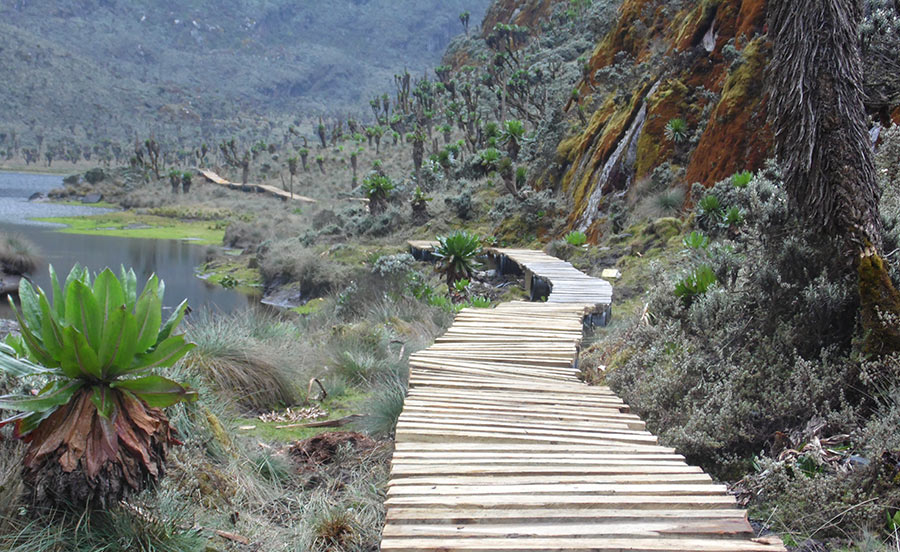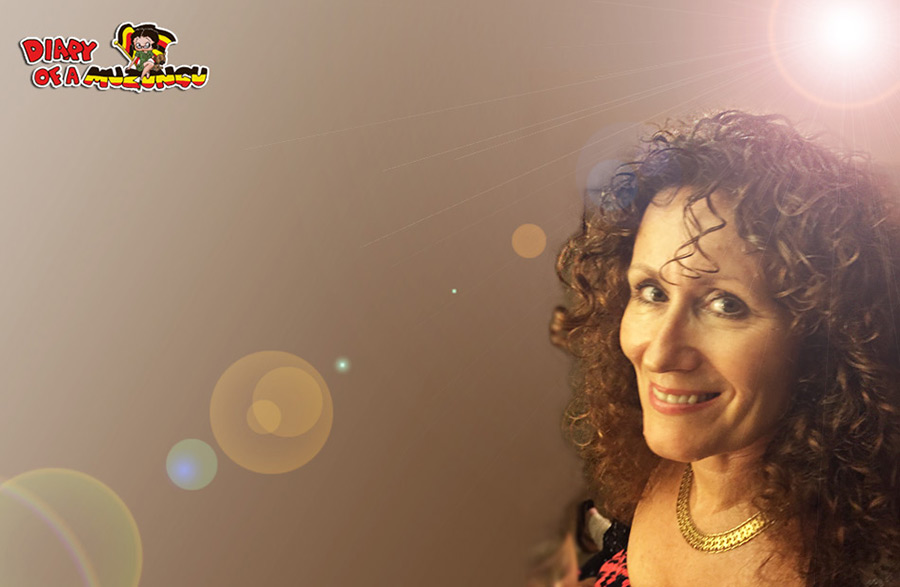
Rwenzori Mountains National Park – a snowball fight on the Equator?

The Rwenzoris lie on Uganda’s western border and are shared with the DRC. In 150 AD the philosopher Ptolemy named the ‘Mountains of the Moon’ as the Source of the Nile
Rwenzori Mountains National Park is recognised by UNESCO as a World Heritage Site. According to the Uganda Wildlife Authority, “Rwenzori Mountains National Park comprises the main part of the Rwenzori mountain chain, which includes Africa’s third highest peak [Margherita Peak] at 5,109 metres above sea level. The combination of spectacular snow-capped peaks, glaciers, V-shaped valleys, fast flowing rivers with magnificent waterfalls, clear blue lakes and unique flora contributes to the area’s exceptional natural beauty. The Rwenzori mountains support the richest montane flora in Africa, encompassing the charismatic giant lobelias, groundsels, and giant heathers which have been called “Africa’s botanical big game”.
In AD150, the geographer Ptolemy from Alexandria labelled Mt. Rwenzori “the Mountains of the Moon.” Explorers spent centuries trying to verify the Source of the Nile. (The Rwenzoris are one of the Nile’s many sources). If you are interested in geography and history, I highly recommend reading Andrew Roberts’ 2021 rewrite of his Uganda’s Rift Valley (review to be published on Diary of a Muzungu soon). One of his many sources is the book Rwenzori Mountains National Park, published in 1998 by Makerere University.
In 1888, the explorer Henry Stanley called the Rwenzori by its local name ‘Ruwenzori’, meaning ‘rainmaker’ or ‘cloud king.’ For centuries, local people were terrified of the cloud king and wouldn’t venture up into the interior of the mountain range. The appeal of jobs as tourism porters (and the ready cash that brings) has changed that, superficially at least.

Sunny weather can’t be guaranteed! To hike the summits, it’s recommended you climb during the dry seasons. It rains frequently in the Rwenzoris
On a clear day, the Rwenzori Mountains – the fabled ‘Mountains of the Moon’ – provide a jaw-dropping backdrop to the hills of Fort Portal. Often the Rwenzoris are simply an area we pass through on our journey between Queen Elizabeth and Murchison Falls but if you want tranquility, clean air and peace, this is the place to visit. Paddling in the cool, clear waters of the Rwenzori’s streams and rivers is magical. The mountain has over fifty lakes!

Three-horned Chameleon, Ruboni Community Camp, Rwenzoris
There are dozens of walks you can do in the foothills of the Rwenzori’s without attempting to scramble to one of the peaks. Half or full day walks, camping, birdwatching, a community coffee tour, hot springs, mountain biking and treks to see waterfalls (and to find the chameleons!) are just a few activities you can do.

Rwenzori (or Ruwenzori) Turaco, as pictured in the Rwenzori Mountains of Uganda. PHOTO Mark Dudley Photography. Click on the image to visit his Facebook page
I was invited to climb Margherita Peak with the same friends I climbed Mount Elgon with. A good level of fitness is required to climb Margherita Peak (and my knee injury prevented me going in the end). It’s very cold up in the mountains at night; during rainy season the boggy terrain can be hard going and exhausting. Global warming has substantially melted the glaciers, opening up crevasses, making the last day’s ascent a technical climb requiring the right equipment.

Boardwalk at Ruboni Community Camp, Rwenzori Mountains
At Ruboni Community Camp, the accommodation is basic but the food is good. We were entranced by the early morning mist rising above the lower peaks of the Rwenzori’s. It looked as if the mountain was actually creating the clouds – is that possible?

























